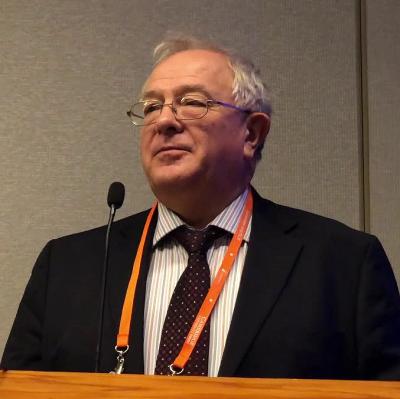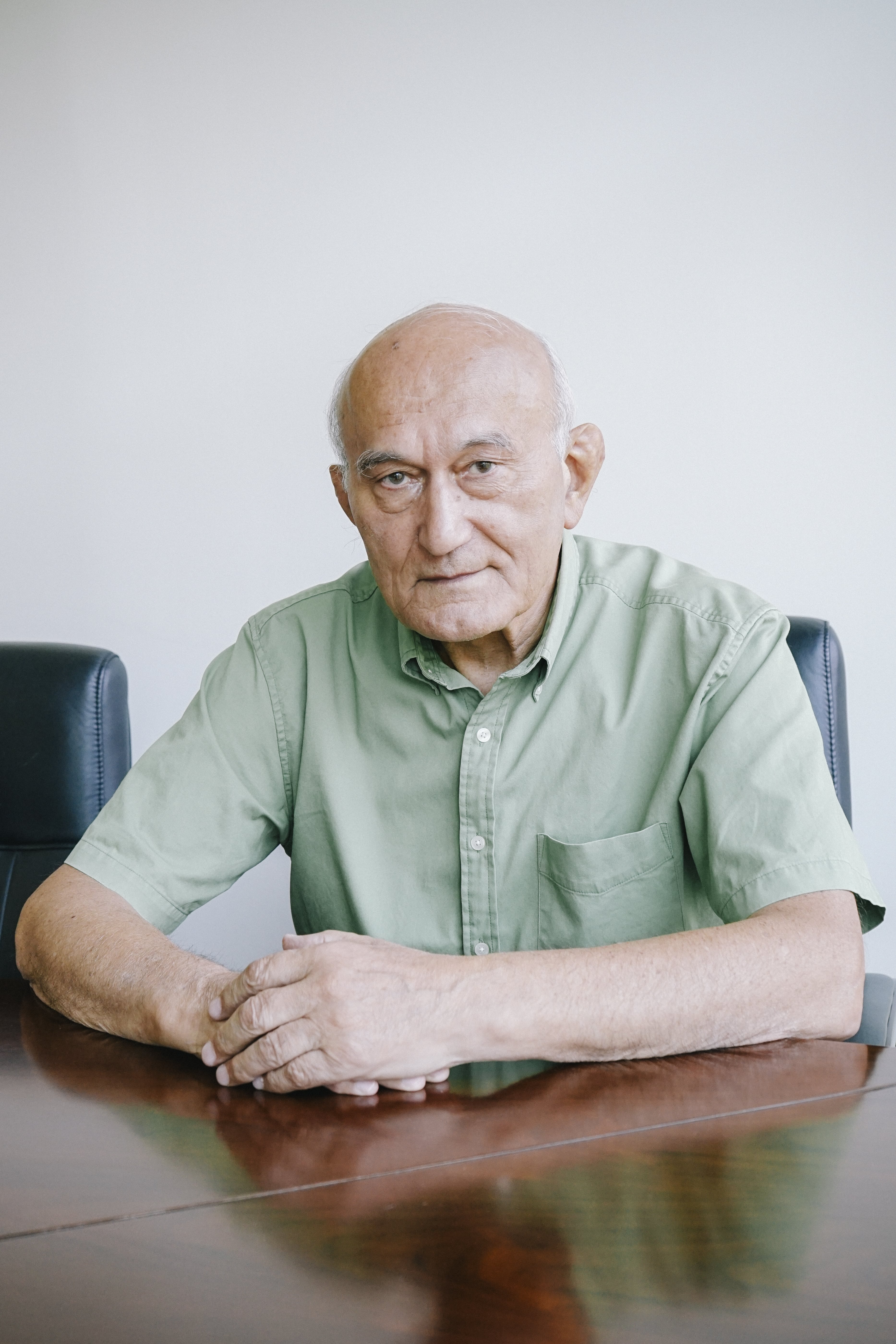In September 2021, the book The Genocide of Ukrainians in 1932–1933 Based on Pre-Trial Investigation Materials (edited by O. Petryshyn, M. Herasymenko, and O. Stasiuk. Kyiv: Marko Melnyk Publishing House, 2021, hereinafter referred to as The Genocide of Ukrainians) was presented at an international forum in Kyiv entitled Mass Artificial Famines: We Remember, We Honor. It was a solemn affair. The editors positioned the book as an “academic publication” and an “academic collection” which included “selected materials from criminal case No. 2201900000000030,[1] as well as some other documents”.[2] Based on the figures formally documented in this criminal case, the main “achievement” of this publication was “scientifically substantiated” new figures regarding Ukrainians’ demographic losses as a result of the Holodomor (10.5 million Ukrainian deaths, of which 9.1 million were in the Ukrainian SSR) and the mass famines of 1921–1923 (3.5 million deaths) and 1946–1947 (1.5 million deaths). These figures are significantly higher than those substantiated in scholarly research. The state awards (from the National Security and Defense Council of Ukraine) presented to the book’s editors and its “expert” authors during this presentation indicated an intent to make these figures official.
It soon became evident that the conclusions of this criminal case, registered on 21 October 2019 following the review of a report by the National Museum of the Holodomor-Genocide of the Ministry of Culture of Ukraine on the commission of a crime,[3]and the materials presented on pages 236–511 of this book are not only far removed from scientific and legal standards (particularly since the appointed “experts” were representatives of the side that requested the case), but are also filled with blatantly false statements about our past. The most significant issues were found in the following three documents.
Firstly, the Conclusion of the Forensic Historical and Source Study Examination of 3 September 2020, No. 302/207-1 (pp. 304–29) provides a historical overview and indicates the number of losses from the mass famines of 1921–1923 and 1946–1947. Secondly, the Conclusion of the Comprehensive Forensic Statistical and Criminalistics Examination dated 3 December 2020, No. 957 (pp. 333–72) addresses the question of the number of losses “during the commission of the crime of genocide in 1932–1933” and discusses the history of this issue. Thirdly, the so-called Conclusion of the Comprehensive Forensic Historical and Criminalistics Examination dated 10 December 2020, No. 979 (pp. 376–511) combines the conclusions of these examinations and, above all, duplicates all the flaws of the examinations regarding the number of losses from the mass famine of 1921–1923 and the Holodomor-genocide of 1932–1933. Since this document does not have any independent value, we are not going to analyse it.
Given the title of the book and its main objective, namely to alter both the scientifically substantiated and legally established number of losses from the Holodomor (in the decision of the Kyiv Court of Appeals from 13 January 2010, it was stated that Kremlin leaders “intentionally organized the genocide of part of the Ukrainian national group, resulting in the death of 3.941 million people”[4]), it was only logical that, following the publication of The Genocide of Ukrainians, scholars focused their attention on the part of the book related to the Holodomor.
In November 2021, several publications appeared in the media pointing out the absolute discrepancy between certain statements in the Conclusion on the Holodomor and the actual content of the sources cited in the book. Specifically, first the domestic press[5] and later the foreign media[6] exposed the complete fabrication of the so-called Asatkin Formula – a calculation that was based on the results of the 1937 census by the Head of the People’s Economic Accounting Administration of the Ukrainian SSR (UNGO URSR), where Oleksandr Asatkin revealed a population deficit of 7.1 million people. It was also clearly demonstrated that the first known scientific estimate of Holodomor losses,[7] provided by Stepan Sosnovyi in his article The Truth About the Famine in Ukraine in 1932–1933, published in November 1942, had been falsified.[8]
The harsh criticism of the blatantly false statements and incorrect data presented in The Genocide of Ukrainians, particularly regarding the calculation of losses, was echoed in a series of other publications, interviews, as well as scientific conferences and press briefings on the topic held in November 2021. This criticism was summarized (with references to texts and videos) in an Open Letter from Scholars and the Public Regarding Falsifications in the Study and Dissemination of Information about the Holodomor-Genocide of the Ukrainian People, signed by a number of leading scholars and published on 1 December 2021. This document emphasized that “the inflation of the number of Holodomor victims without sufficient thorough and factual research or verification of the results inflicts irreparable harm on the restoration and preservation of the national memory of the Ukrainian people”.[9]
In the fall of 2023, two scholarly articles were published in the Ukrainian Historical Journal examining the aforementioned Conclusion of the Comprehensive Forensic Statistical and Criminalistics Examination dated 3 December 2020, No. 957. One of these articles analysed the use of Soviet propaganda publications from 1932–1933 as the basis for calculating Holodomor losses in The Genocide of Ukrainians, pointing out the unscientific and objectively anti-Ukrainian nature of such an approach.[10] In the other article, the authors – professional demographers – conducted a thorough analysis and highlighted the undeniable flaws in the sources and methodology used to calculate the Holodomor losses in the referenced Conclusion.[11]
This was how the scholars promptly provided and later thoroughly substantiated a negative evaluation of the results reached by the Conclusion of the Comprehensive Forensic Statistical and Criminalistics Examination of 3 December 2020, No. 957concerning the losses from the Holodomor. In contrast, the Conclusion of the Forensic Historical and Source Study Examination of 3 September 2020, No. 302/207-1, which, among other things, discussed the losses from the famine of 1921–1923, initially remained outside the focus of the researchers’ attention. Given that the book itself emphasized the losses from the Holodomor, this approach was entirely logical.
It would seem that after December 2021 the examples of source falsification and inaccuracies in the calculation of Holodomor losses would have been sufficient to preclude further consideration of The Genocide of Ukrainians as a credible source on the subject. However, the editors of this book thought otherwise. After a period of relative quiet due to the onset of Russia’s full-scale aggression, they intensified their activities and, at the end of 2022, published a second, expanded edition of their opus magnum(subsequent citations will refer to this edition).[12] Notably, the republished book retained all information previously proven to be false. This fact suggests that the false information comprised not merely errors but intentional falsifications, a suspicion further reinforced by the persistent promotion of this book by its editors and “expert” authors.
In contrast to the issue of the Holodomor, the Conclusion of the Forensic Historical and Source Study Examination of 3 September 2020, No. 302/207-1
(hereinafter referred to as the Conclusion), which dealt with the famine of 1921–1923, received little attention in reviews of The Genocide of Ukrainians. However, in response to the publication of the second edition of the book, a scholarly review by Hennadii Yefimenko specifically addressing the Conclusion was posted on the website of the Institute of History of Ukraine. This review highlighted numerous examples of distortions and falsifications of sources within the 1921–1923 famine narrative. It also emphasized the lack of references to primary sources in regards to the figure of 3.5 million deaths from this famine. Furthermore, the author of the article noted that the unsubstantiated newspaper article that was cited in the Conclusion as allegedly decisive evidence did not qualify as a reliable source.[13]
Despite all the aforementioned issues, the Conclusion was endorsed by the signatures of five individuals identified as “experts”. Four of them (Svitlana Markova, Volodymyr Vasylenko, Olha Movchan, and Vasyl’ Marochko) represented the National Museum of the Holodomor-Genocide, which had commissioned the examination. The fifth person, Heorhiy Papakin, represented the M.S. Hrushevsky Institute of Ukrainian Archaeography and Source Studies of the National Academy of Sciences of Ukraine, of which he is the director.
It is important to note that The Genocide of Ukrainians made public the resolution issued by the senior investigator O. Malynovsky, in which he tasked the examination with determining the number of losses from the mass famines of 1921–1923 and 1946–1947. Out of this resolution’s five points, two directly involved the M. S. Hrushevsky Institute of Ukrainian Archaeography and Source Studies as an institution under the leadership of Heorhiy Papakin and highlighted the Institute’s leading role in this “examination”:
1. “To appoint a forensic historical and source study examination in the criminal case to be carried out by the M.S. Hrushevsky Institute of Ukrainian Archaeography and Source Studies of the National Academy of Sciences of Ukraine and a branch of the National Museum of the Holodomor-Genocide, the Holodomor Research Institute.
[…]
5. A copy of this order is to be sent for execution to the M.S. Hrushevsky Institute of Ukrainian Archaeography and Source Studies of the National Academy of Sciences of Ukraine, as well as to the branch of the National Museum of the Holodomor-Genocide, the Holodomor Research Institute”.[14]
Based on the outer design of the book, these points had been fully implemented: the publication bears the imprint of the M.S. Hrushevsky Institute of Ukrainian Archaeography and Source Studies of the National Academy of Sciences of Ukraine (which signals that the publication has been recommended for printing by the Academic Council of the Institute). Additionally, the first page of the Conclusion in the book appears to be printed on the letterhead of this Institute. To illustrate this, I provide a screenshot of the first page of the Conclusion.[15]
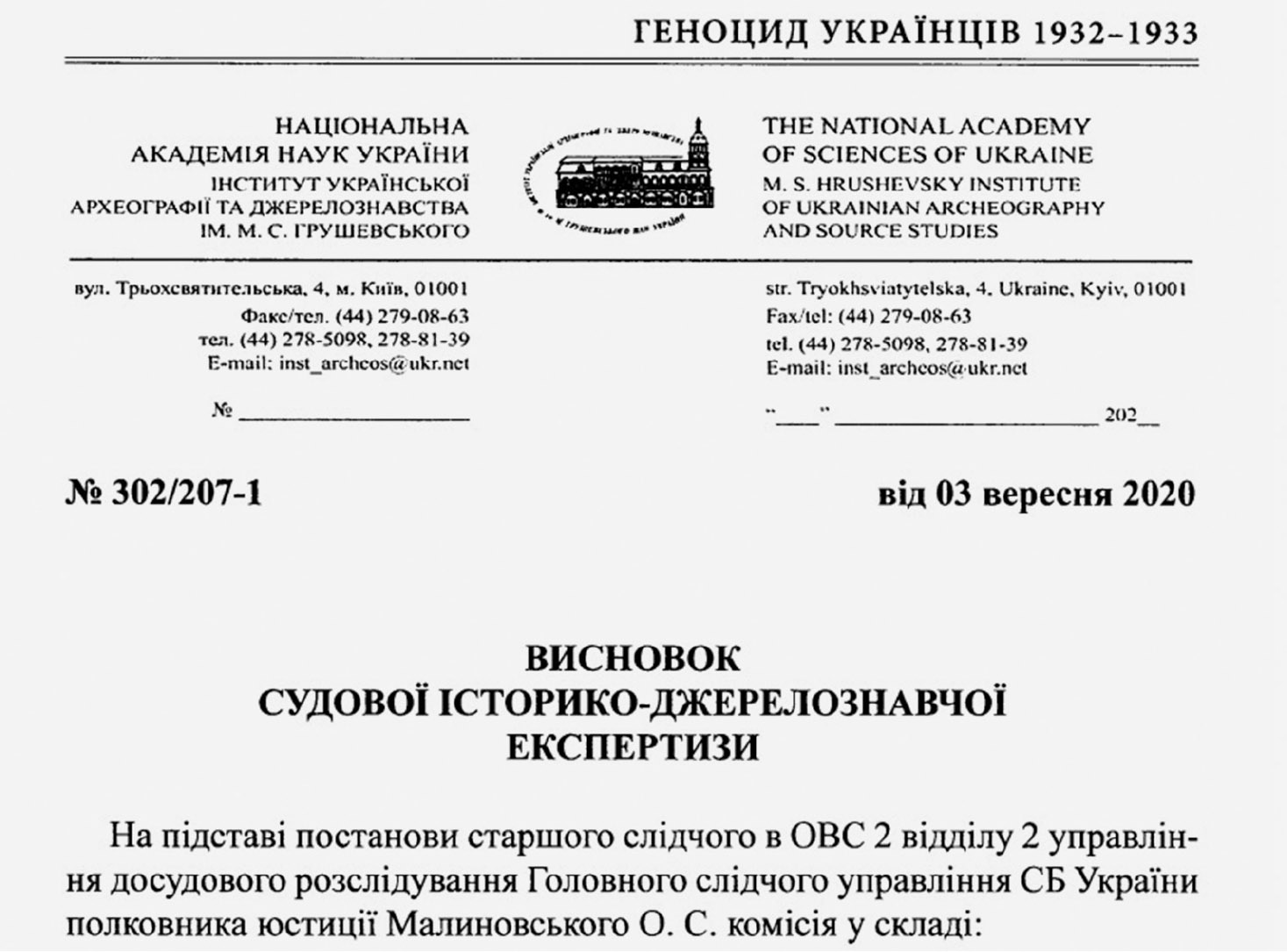
Ill. 1. Conclusion of the Forensic Historical and Source Study Examination of 3 September 2020, No. 302/207-1
To clarify the circumstances surrounding the review of the Conclusion at the meeting of the Academic Council of the M.S. Hrushevsky Institute of Ukrainian Archaeography and Source Studies of the National Academy of Sciences of Ukraine (and based on the date that appears on the first page of this Conclusion, i.e., 3 September 2020), in early April 2024, I officially requested an excerpt from the relevant meeting minutes of the Academic Council. In doing so, I noted that the book The Genocide of Ukrainians turned out to be “not just far from scientific standards but filled with blatant falsifications of our nation’s history”, and I urged the Academic Council of the Institute to retract its approval of the book’s publication.[16]
The response I received from Heorhiy Papakin was quite unexpected as it stated that “neither the manuscript of the publication nor the results of the examination were reviewed or discussed by the members of the Academic Council of the Institute. Therefore, it is impossible to provide access to the meeting minutes of the Academic Council on this issue, or to withdraw its approval for publication or the conclusion [that the manuscript has been reviewed or discussed]”[17].
This response suggests that the order by the senior investigator O. Malynovsky that is mentioned in The Genocide of Ukrainians was either not carried out or perhaps never issued at all, and that the Institute’s imprint and the printing of the first page of the Conclusion on its letterhead had been forged. Consequently, neither the accompanying text about the history of the 1921–1923 famine nor the figure of 3.5 million deaths during the 1921–1923 famine, as determined by the self-appointed experts in the Conclusion, were ever reviewed by scholars from this Institute.
My 2023 review of the second edition of the book suggested rectifying the situation on the basis of the assumption that the inaccuracies could have been unintentional, possibly caused by haste or administrative pressure. I trusted that the aforementioned colleagues adhered to a scientific approach and would find falsifications unacceptable. Thus, the review called on the historians who signed the Conclusion on the 1921–1923 famine to withdraw their signatures.
ALAS, THIS DID NOT HAPPEN
Moreover, Markova, Marochko, and Papakin continued to actively participate in events organized by the editors of The Genocide of Ukrainians, one of the main objectives of which was the dehumanization of prominent Holodomor researchers and the institutions engaged in the scholarly study of the Holodomor. Specifically, these individuals were among the main participants of a 7 November 2023 gathering organized by the editors of The Genocide of Ukrainians. The meeting proclaimed itself the World Congress of Researchers working on the Holodomor-Genocide of Ukrainians.
The gathering not only repeatedly referenced the scientifically debunked figure of “10.5 million Ukrainians exterminated in 1932–1933 by the communist totalitarian regime”, as if it were a scientifically established estimate of losses. In their media outlet Ukraina moloda, the organizers of the gathering emphatically accused such scholars as Ella Libanova, Stanislav Kulchytskyi, Hennadiy Boriak, Oleksandr Hladun, Yaroslav Hrytsak, Serhiy Plokhyi, Ivan Patryliak, Liudmyla Hrynevych, Hennadii Yefimenko, and others[18] of being the Kremlin’s “fifth column”.[19]
The fabricated number of losses from both the Holodomor and the 1921–1923 famine, as presented in The Genocide of Ukrainians, continue to be persistently propagated by some members of the Ukrainian political sphere and the Ukrainian diaspora, many of whom sincerely believe these numbers and are simply unaware of the obstacles they objectively create to the idea of advancing the Ukrainian perspective on the crimes committed by the Kremlin and the tragedy experienced by the Ukrainian people. Therefore, it has become necessary to continue the scholarly analysis of the Conclusion.
Given that my 2023 review did not give sufficient attention to the direct analysis of the key figure in the Conclusion, specifically the claim of 3.5 million Ukrainians allegedly dying from the 1921–1923 famine, the primary task of the current review is to investigate the genesis of this figure.
Despite the absence of Soviet-era prohibitions on mentioning or even researching the 1921–1923 famine in the Ukrainian SSR (at that time, it was referred to as the 1921–1922 famine), and despite the accessibility of contemporary sources to researchers, the issue of the death toll remains insufficiently studied. The challenges in researching this issue primarily lie in the absence of clear criteria to distinguish those who died as a result of this famine from other losses during the demographic catastrophe of 1914–1923. Therefore, it is entirely understandable that the article on the 1921–1923 famine in the Encyclopedia of Modern Ukraine emphasizes that “the first cases of death by starvation were recorded in October 1921; however, the total number of deaths from the famine remains unknown”.[20]
Of course, expert estimates of losses were previously provided by both diaspora historians and contemporary Ukrainian scholars, with the first such estimate likely being a statement made by the Head of the All-Ukrainian Central Executive Committee (VUTsVK), Hryhoriy Petrovsky, in December 1922, when he mentioned that “126 thousand people died from hunger in Ukraine”.[21]However, such estimates were often biased and one-sided or were grounded on a very narrow range of sources. Furthermore, after Ukraine gained independence, the primary research focus shifted to the Holodomor of 1932–1933, the famine that was excluded from public discourse during Soviet times.
The first specialized scholarly study that focused specifically on determining the number of losses from the 1921–1923 famine in the Ukrainian SSR was the article published in 2019 by M.V. Ptukha Institute of Demography and Social Research of the National Academy of Sciences of Ukraine titled Demographic Losses of Ukraine during the First Soviet Famine of 1921–1923. In the introduction to the article, having noted that existing authoritative estimates range from 0.3 to 1.5 million losses, the authors rightly point out that “from a scholarly standpoint, this range in estimates presents the least-researched aspect of the 1921–1923 famine problem”.[22] The article then goes on to substantiate, using a broad range of sources, the figure of 935.8 thousand losses as a result of excess mortality in 1921–1923, with losses directly from hunger estimated at 502.5 thousand people. Another 433.4 thousand allegedly died of infectious diseases.[23]
However, in 2021, contrary to the research findings of specialists, the figure of 3.5 million losses from the 1921–1923 famine began to be actively disseminated in the public sphere, largely due to the publication of The Genocide of Ukrainians. At that time, an attempt was made to establish this figure as official.
The issue of losses from the 1921–1923 famine was directly addressed in the aforementioned Conclusion. In response to the question “What was the number of Ukrainians exterminated by the communist totalitarian regime during the mass artificial famine of 1921–1923?”, the Conclusion provided a clear answer: “3.5 million Ukrainians died”.[24]
Where did the figure of 3.5 million come from, and what is the true origin of this number?
Within the text of the Conclusion, this figure is composed of two figures. The first one, 1.5 million, is falsely attributed to a well-known demographer, Arsen Khomenko: “According to A. Khomenko’s individual calculations, the population losses in the Kharkiv and Poltava hubernijas[25] amount to 1.5 million Ukrainians”.[26] The second figure of 2 million is “derived” by the editors of the Conclusion from the following statement,
Using a mortality rate of 27.1% from a population of 7.7 million permanently residing in the five southeastern hubernijas affected by the mass artificial famine, and having applied the formula x = 7.7 million * 27.1% / 100%, scientist A[rsen] Khomenko calculated that the number of those who had perished amounted to 2,086,700.
To this last number 1.5 million is added, and then the total is rounded to 3.5 million.[27]
Thus, the editors of the Conclusion put the entire “responsibility” for the figure of 3.5 million deaths on Arsen Khomenko, who in reality did not perform such calculations. Here is the concluding paragraph of the book (p. 428):
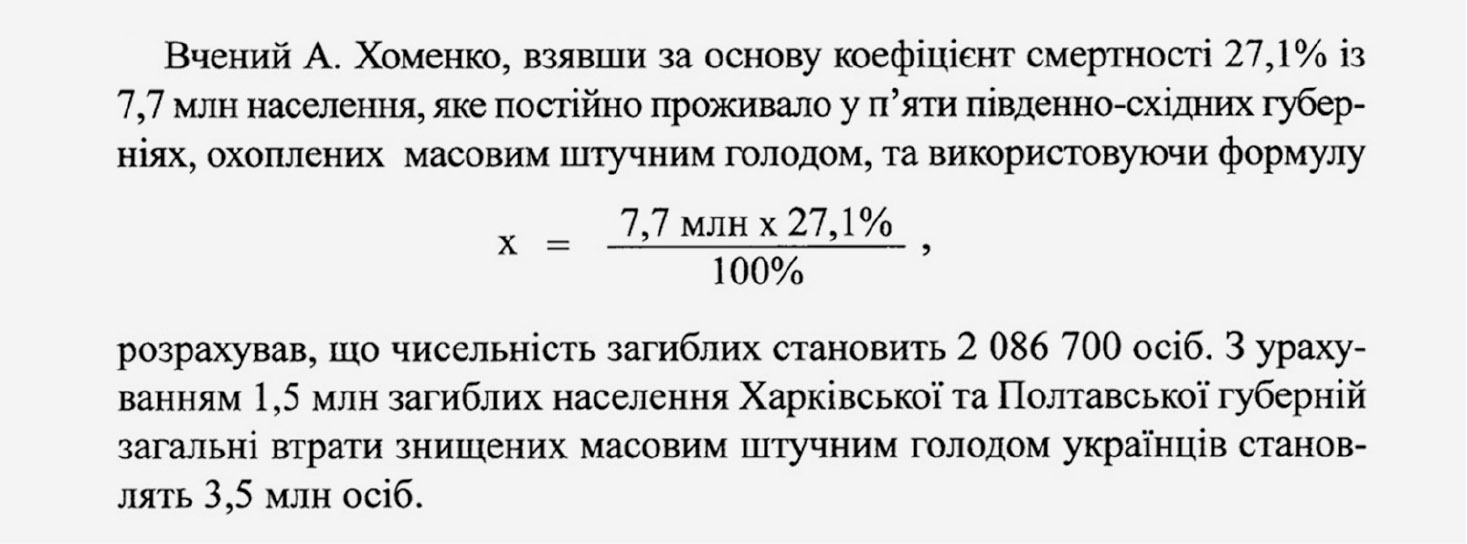
Ill. 2. The final formula and the results of the estimated losses from the 1921–1923 famine
As we can see from the screenshot, there is no reference to the source containing the abovementioned “mortality coefficient of 27.1%” when presenting the “final formula”. Additionally, no source is cited for the claim regarding the 7.7 million residing in the “five southeastern hubernijas affected by the mass artificial famine”.
However, these components of the provided “formula” (27.1% and 7.7 million) are indeed mentioned earlier in the text of the Conclusion, including a reference to a source. Surprisingly, in both cases the “experts” do not refer to Arsen Khomenko’s texts, as one might have expected from the “final formula”. Instead, they refer to an article published by Vasyl Marochko in the newspaper Slovo Prosvity in April 2018 under the title Lenin’s Mass Extermination by Hunger, 1921–1923: A ‘Brotherly’ Distribution of Death[28] (hereafter referred to as “V. Marochko’s newspaper article”) that does not reference any sources. Moreover, the first mention of the coefficient within the text of the Conclusion refers to just one hubernija, not five, “In Zaporizhia hubernija, 1.2 million people were starving, and the mortality rate was 27.1%”.[29] Thus, the infamous 27.1% in the explanatory note of the Conclusion and in its “final formula” are being applied to different objects: in the first case, it refers to those who “were starving” in Zaporizhia hubernija, while in the second it refers to the “population permanently residing” in five hubernijas. Therefore, even this single fact provides sufficient grounds to assert the false premise of the thesis postulating 2 million deaths from the famine of 1921–1923 in these hubernijas.
Now I will address the source of the figures mentioned in the Conclusion, namely Marochko’s newspaper article, which became the only basis for the “calculation” of losses. In this article, the 27.1% and 7.7 million population are given little attention, and the references are scattered across three paragraphs of a rather extensive text.[30]
The first of the three references to the 27.1% figure contains a clue for identifying the source of the so-called “mortality coefficient” that appears in the Conclusion: it is noted that the mentioned 27.1% represents the mortality rate among “those who fell ill due to hunger”. The origin of the figure of 7.7 million also becomes clear: it likely refers to the rural population of the three southeastern hubernijas as of 1 May 1923. These regions indeed absorbed the territories of Zaporizhia (annexed to Katerynoslav) and Mykolayiv (annexed to Odesa) hubernijas, which were dissolved in the autumn of 1922, as well as Oleksandriya povit of then-dissolved Kremenchuk hubernija (annexed to Katerynoslav hubernija ).[31]
Although Marochko’s newspaper article does not cite any sources, it does – similarly to the Genocide of Ukrainians – repeatedly mention the name of the Ukrainian demographer Arsen Khomenko. A keyword search led me to a scholarly article by V. Marochko published a year earlier and dedicated to Khomenko.[32]
Since this article about Arsen Khomenko is a scholarly one, it references the sources for the same figures and phrases that appear in the newspaper article. This makes it possible to determine the actual basis of the claims made in the newspaper article. Specifically, in Marochko’s scholarly article we encounter a sentence, the first part of which is identical to the newspaper version, “The mortality rate compared to ‘those who fell ill due to hunger’ in Zaporizhia hubernija was 27.1%”.[33]
Indeed, the quotation does not specify the date for the recorded figure, and from the context it might appear that refers to September 1922. The number of those “who fell ill due to hunger” is not indicated either. However, following this sentence we find a reference to the source: an editorial article from the Statistical Bulletin edition of 1922, which made use of the reports from the Central Committee for Aid to the Starving, under the auspices of the All-Ukrainian Central Executive Committee (TsK DopHol; hereafter referred to as the Central Aid Committee to the Starving).[34] This source not only contains the cited statement but also indicates the period it pertains to, as well as the number of deaths among “those who fell ill due to hunger”. The article is in Russian, therefore I provide my translation of the entire sentence that contains the mentioned reference here, “The extent of the severity of the situation is revealed, for instance, by the fact that starting in the autumn of 1921 [until] 1 May of [this] year, 188,563 cases of hunger-related illnesses were registered in Zaporizhia hubernija [and this was the highest figure among all hubernijas, while the total recorded number of such illnesses across the five hubernijas was 269,286 peopleH.Y.], of which 50,096 were fatal, including 46,262 cases of child mortality (the latter constitutes about 17% of the number of starving children in Zaporizhia)”.[35]
Here is a screenshot of the entire paragraph that contains the quoted sentence. It shows that the issue in question pertains to 7 May 1922.
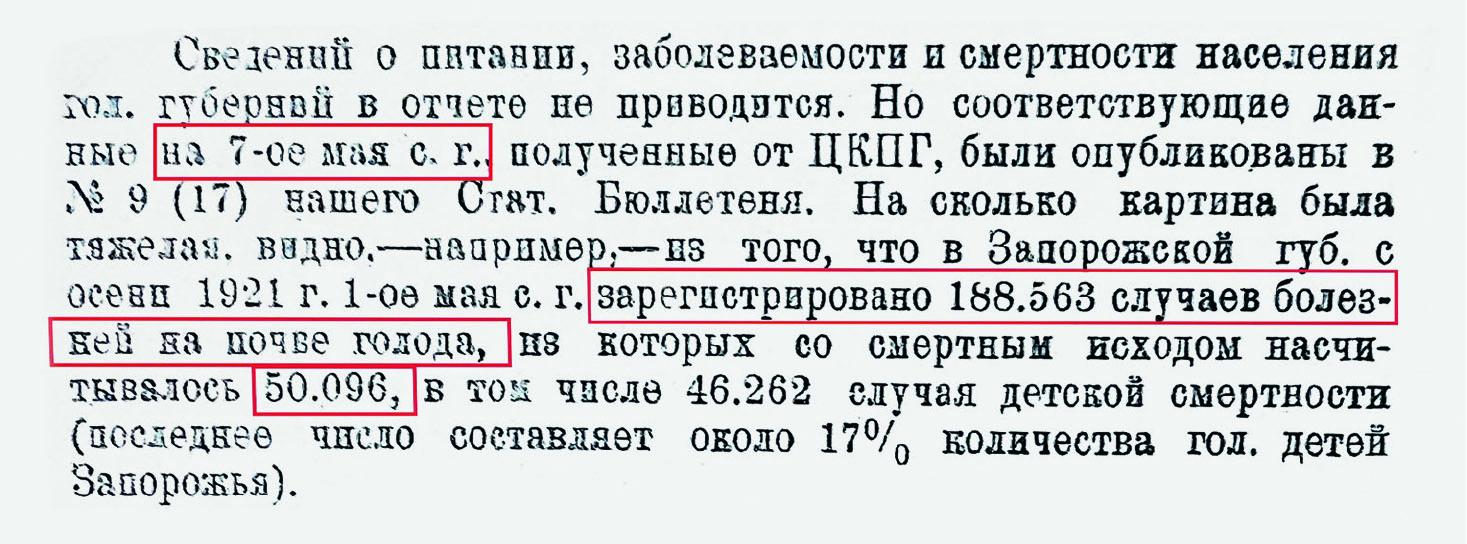
Ill. 3. Incidence of hunger-related illnesses and mortality in Zaporizhia hubernija starting autumn 1921, according to the Central Aid Committee as of 7 May 1922
Given that the Statistical Bulletin analyses an editorial article rather than a text authored by Arsen Khomenko, the mortality rate of 27.1% mentioned in Marochko’s newspaper article is not formally attributed to Khomenko. Thus, attributing the authorship of the mortality rate of 27.1% to Khomenko is an invention of so-called “experts” in population estimates, or the editors of theGenocide of Ukrainians; it is, essentially, a “falsification of a fabrication”. Moreover, the rate itself is calculated inaccurately. If 50,096 died of those 188,563 who “fell ill due to hunger”, then the rounded percentage would be 26.6% (50096/188563*100), not 27.1%.
However, a discrepancy of 0.5% is a minor issue. The main point is that this rate, which was calculated based on the source information, metaphorically represents the situation only in Zaporizhia hubernija of the Ukrainian SSR, the hardest hit by famine. Moreover, it pertains not to the entire population of the hubernija (listed in the text as 1.317 million), nor to all those suffering from hunger (930,000 in May 1922), but only to those identified as “ill due to hunger” (188,562 people).[36]
I should emphasize that all the figures mentioned in the previous six paragraphs have been extracted from the same article published in the Statistical Bulletin – an article that summarizes data from various reports by the Central Aid Committee. My verification of the data presented in this article against the texts of each of these Central Aid Committee reports, which were also published in the Statistical Bulletin, confirms that in the report that mentioned the 188,562 who “fell ill due to hunger” in Zaporizhia hubernija (dated 7 May 1922), the population of the entire hubernijas was listed as 1.1256 million, while the number of those suffering from hunger (as of May) was 948,556 people.[37] This indicates that the same figures could vary in different reports, and this is something any scholar should keep in mind when specifying the source of the figures provided.
There is one more detail that any specialist should have noted: in the aforementioned article from the Statistical Bulletin, which Marochko cites in his scholarly work and whose data served as the basis for calculating the mortality rate in his newspaper article, there are additional mortality indicators among those who fell ill “due to hunger”. We are referring to a table compiled by the Central Aid Committee. This article breaks down the number of people who “fell ill due to hunger” across all five hubernijas officially recognized as famine-stricken.
The table provides data for each hubernija for the period from January to August 1922. The indicators vary significantly among the hubernijas, but the situation in Zaporizhia was indeed the most severe. This time, a slightly higher number of those who fell ill due to hunger is reported, i.e., 195,238 people (since the data extends to August 1922), but the number of deaths among them is significantly lower, i.e., 22,431 people.[38] If we convert these figures into the mortality rate, it would be 11.5%. Furthermore, the Central Aid Committee itself acknowledged that these figures were calculated based on incomplete data.
Despite the fact that the figures have been acknowledged as incomplete by the editors, the data allowed for a comparative review of the situation across different hubernijas. Let us examine the screenshot of the table and the accompanying explanations from the article.[39]
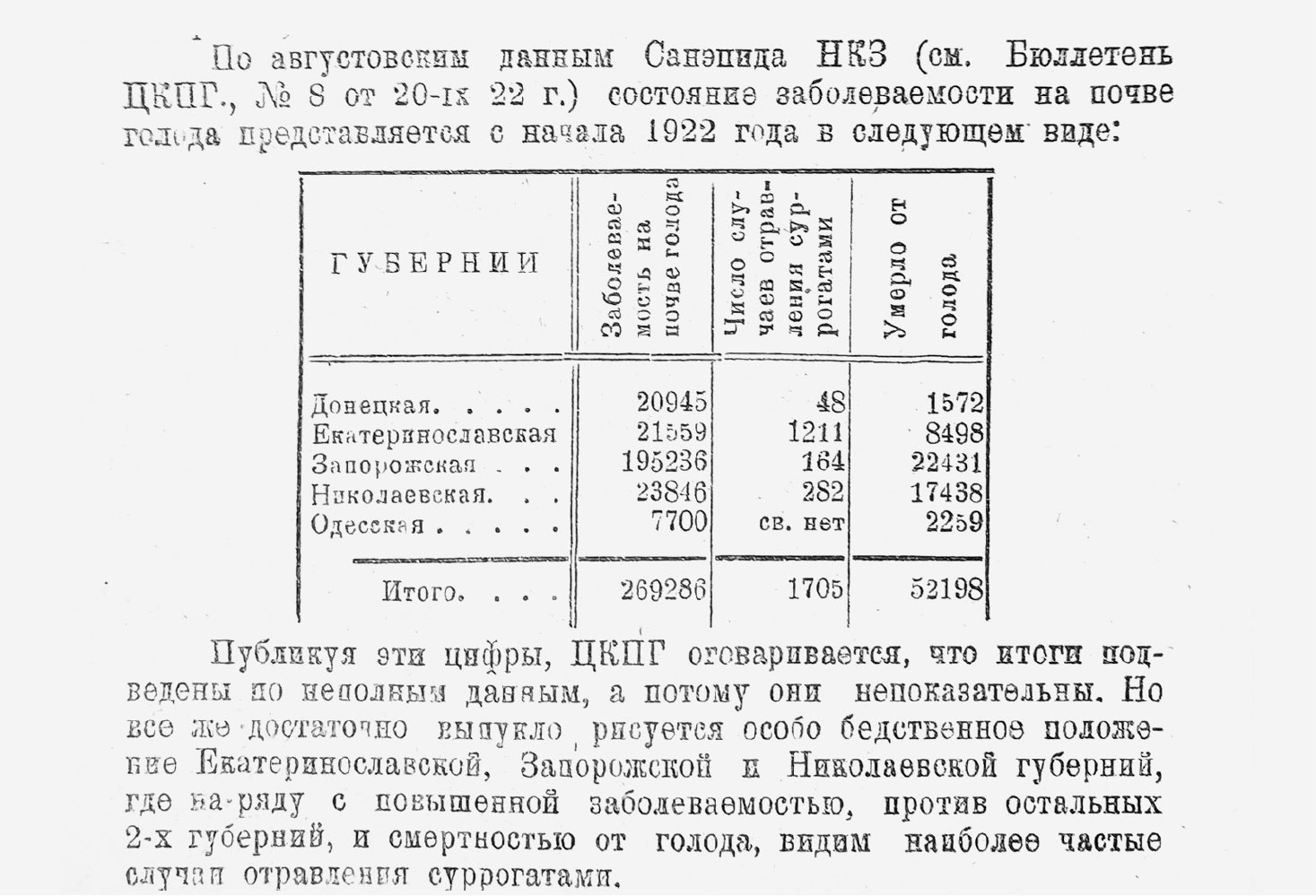
Ill. 4. Assessment by the People’s Commissariat of Health of hunger-related illness and mortality rates from January to August 1922
Of course, I do not intend to assert that the number of deaths from famine in the Ukrainian SSR is limited to the 52.2 thousand mentioned in the table. Nor do I claim the accuracy of the figures presented by Hryhoriy Petrovskyi at the Seventh All-Ukrainian Congress of Soviets in December 1922, which stated that “126 thousand people died from famine in Ukraine”.[40] I insist, however, that the incompleteness of the data acknowledged by the Central Aid Committee fundamentally precludes any realistic assessment of the losses from the 1921–1923 famine based on the figures provided in these reports. In other words, it is a priori impossible to make a well-founded estimate of the number of deaths from the 1921–1923 famine using the data cited by Vasyl Marochko. There is certainly no basis for deriving the number of direct losses from the famine from these figures.
However, despite the aforementioned issues, Marochko’s newspaper article not only specified the number of deaths during the 1921–1923 famine but also “forged” a common “coefficient/rate” of losses for several hubernijas during that period. Clearly, this has no relation to reality.
When “a common rate of losses” is first mentioned in Marochko’s newspaper article and scholarly text, it is stated that the “mortality rate among those who ‘fell ill due to hunger’ was 27.1%”. However, the figures from which this coefficient was calculated and the category of the population to which it pertained are not specified. The article does not even suggest that the “27.1%” was applied to the entire Zaporizhia hubernija. In other words, the information is fragmentary but, initially, it is not overtly false. Yet, by the end of the same article, this “coefficient” has been applied without any justification as a general rate for the entire rural population residing not only in the officially recognized famine-stricken southeastern regions, but also in Kharkiv and Poltavaregions. Moreover, the number of deaths is not calculated from an estimate of the population in these regions in 1921 (when famine affected cities as much as villages) but is inexplicably based on the estimated number of peasants in these regions as of early May 1923, that is after the period of mass mortality from famine had ended.
To clarify the point, I will provide a screenshot of part of the table from the publication by Arsen Khomenko,[41] which was referenced in Vasyl Marochko’s academic article.[42] It is from this table that Marochko derived his calculations for the rural population. The list of gubernias hubernijas and the population residing in them is given as of 1 May 1923, after the reduction of the number of hubernijas in the Ukrainian SSR from 12 to 9. The red highlights the hubernijas to which Marochko, and subsequently the editors of the Conclusion, applied the “mortality rate of 27.1%”.
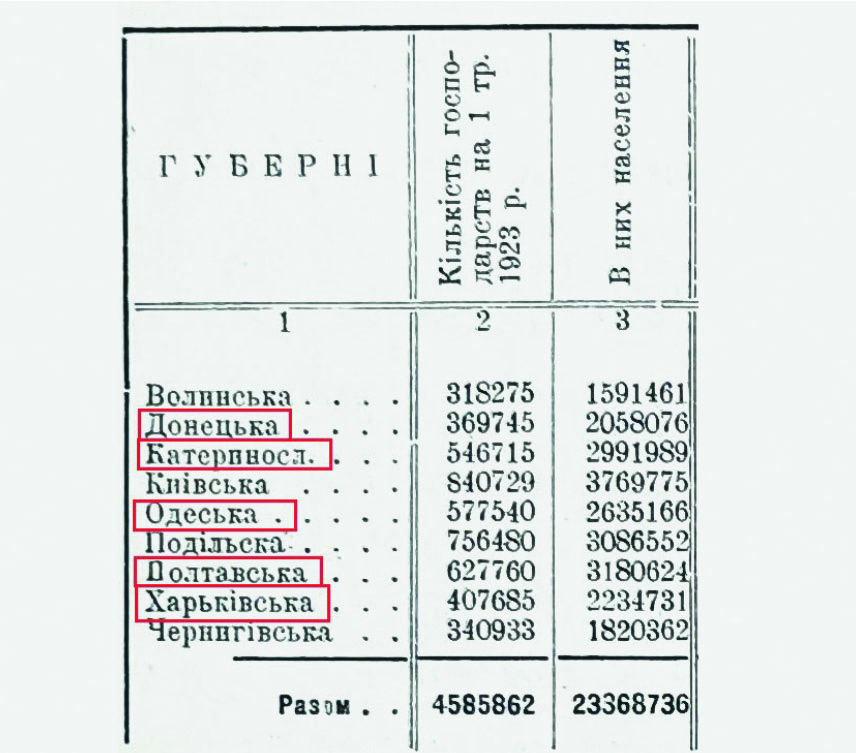
Ill. 5. Number of households and total rural population of the Ukrainian SSR by gubernias hubernijas as of May 1, 1923, according to Arsen Khomenko’s estimates[43]
Let us examine the rural population figures of the three southeastern hubernijas: Donetsk, Katerynoslav, and Odesa. These hubernijas had indeed absorbed Zaporizhia and Mykolayiv hubernijas by the spring of 1922. Upon calculation, we find that Khomenko estimated the rural population of these three hubernijas at 7,685,231 people as of 1 May 1923. Upon being rounded, the figure comes to 7.7 million – the exact number mentioned in Marochko’s newspaper article and in the Conclusion. 27.1% of this number equals approximately 2.086, or roughly 2 million people. However, while relying on these figures, Marochko failed to account for the fact that, as of May 1923, Katerynoslav hubernija also included Oleksandriya povit of the former Kremenchuk hubernija, whose population according to the 1920 census was 388,889 people.[44] Thus, Marochko overlooked the territorial inconsistency and, accordingly, the difference in population between the three southeastern hubernijas of the Ukrainian SSR as of 1 May 1923, and the five such hubernijas as of early May 1922.
Let us return to the “mortality coefficient”. There are no grounds for applying it as a common indicator for several hubernijas. Even the incomplete data cited in the publications upon which V. Marochko relies provide a clear understanding of the diverse nature of the famine in each hubernija. Furthermore, the aforementioned article by Arsen Khomenko contains a table dedicated to analysis of the natural movement of the rural population in the Ukrainian SSR from 1 May 1922 (the peak of the famine) to 1 May 1923.[45]This table, broken down by okruga, clearly illustrates the regional differences in natural population movement and, consequently, in famine losses during the reporting period. In March 1923, okrugas replaced povits, reducing the number of third-level administrative units (centre-hubernija-okruga/povit) by half. This table is shown below:[46]
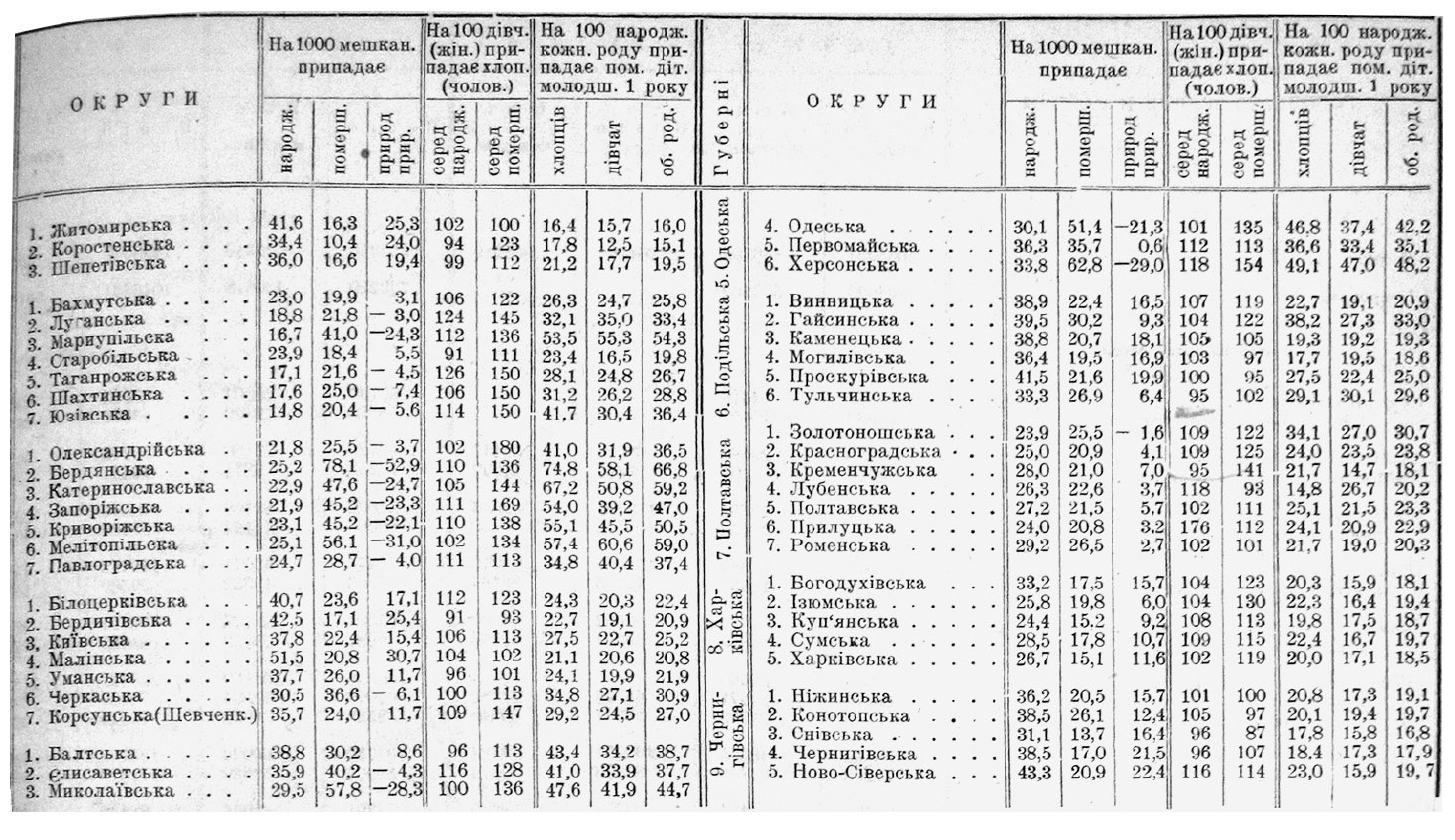
Ill. 6. Table of the natural movement of rural population in the Ukrainian SSR from 1 May 1922 to 1 May 1923, by okruga (as estimated by A. Khomenko)
Let me recall that the baseless application of the invented “mortality coefficient” to the famine-stricken hubernijas did not seem to satisfy either Marochko or the editors of the Conclusion. In V. Marochko’s newspaper article, without any justification, the same “coefficient” was applied to the rural population of Kharkiv and Poltava hubernijas as of May 1923. Calculations demonstrate that, according to Khomenko’s estimates, some 5,415,355 peasants resided in these two hubernijas at that time (the number also included the residents of three povits from the Kremenchuk hubernija that had been dissolved in October 1922).[47] Applying 27.1% to this figure results in approximately 1.5 million people. Subsequently, by adding together these two completely fabricated numbers (2 million and 1.5 million), first Marochko in 2018 in Slovo Prosvity, and later the signatories of the Conclusion went on to claim that “3.5 million Ukrainians died from the mass artificial famine of 1921–1923, orchestrated by the totalitarian communist regime”.[48]
Thus, if we consider the administrative-territorial division of spring 1923, the fabricated “mortality rate/coefficient” was applied to five of the nine existing hubernijas. However, if we evaluate it within the administrative division of spring 1922, this figure essentially covers eight out of twelve hubernijas. In other words, both Marochko and, following him, the editors and signatories of the Conclusion, by way of accumulating falsehoods and demonstrating ignorance, assert an absolute absurdity: that in 1922, in each of the eight hubernijas (out of the twelve that existed) of the Ukrainian SSR, 27.1% of the population died from hunger (whether it be peasantry, according to Marochko, or the entire population, as claimed by the Conclusion). It is important to emphasize that this figure is significantly higher than the proportion of losses from the Holodomor of 1932–1933. Moreover, despite the clear distinction between the terms “number of residents” and “number of peasants”, the editors and signatories of the Conclusion show no concern for this difference, presenting absolutely identical quantitative indicators for both concepts.
Such a colossal percentage of deaths from hunger, as the editors and signatories of the Conclusion insist, occurred despite the fact that, since December 1921, there existed open sources of information about the ongoing famine in the Ukrainian SSR, and international organizations were involved in alleviating the famine as well. There are no words to adequately describe such blatant falsehoods about our past, uttered by so-called “scholars”.
In summarizing my analysis, I must categorically state that the section of the Conclusion that deals with the genesis of the 3.5 million losses from the 1921–1923 famine contains not a single verified figure – it’s all pure fabrication. Arsen Khomenko, on whose supposed authority the editors of the Conclusion base this number, never even remotely mentioned anything resembling the 27.1% figure, nor did he discuss any “mortality coefficient” even for the truly famine-stricken hubernijas. Moreover, he certainly did not write about 1.5 million deaths from hunger in Poltava and Kharkiv regions.
A telling detail: by taking the claims about the number of losses from Marochko’s newspaper article and attributing them to Khomenko, the editors of the Conclusion managed to distort even the fictitious figures invented by Marochko himself. Given the complete fabrication of all the “arguments” presented in the Conclusion, there is every reason to assert that there is no basis for the estimate of 3.5 million losses from the 1921–1923 famine. The dissemination of such pseudoscientific and blatantly false statements, endorsed by the director of an academic institute within the National Academy of Sciences of Ukraine or by well-known scholars and public figures, is not only an outright endorsement of pseudoscience as such actions also significantly damage both the modern image of Ukraine and our collective memory of the past.
BIBLIOGRAPHY
Ch[omenko], A[rsen], ‘Pryrodnij ruch silʹsʹkoho naselennja Ukrajiny (Po danych vesnjanoho oprosu 1923 roku)’, Statystyčnyj Bjuletenʹ, 20 (1923), 26–27
Herasymenko, Mykola and Valerij Udovyčenko eds, ‘Tekst postanovy Apeljacijnoho sudu m. Kyjeva u kryminalʹnij spravi za faktom včynennja henocydu v Ukrajini v 1932—1933 rokiv’, in Henocyd v Ukrajini 1932–1933 pp. za materialamy kryminalʹnoji spravy № 475 (Kyjiv: NAN Ukrajiny, 2014)
Hladun, Oleksandr, Natalija Levčuk and Oleh Volovyna, ‘Šče raz pro kilʹkistʹ vtrat unaslidok Holodomoru: ekspertna ocinka’, Ukrajinsʹkyj istoryčnyj žurnal, 5 (2023), 93–118
Hladun, Oleksandr, Omeljan Rudnycʹkyj and Natalija Kulyk, ‘Demohrafični vtraty Ukrajiny pid čas peršoho radjansʹkoho holodu 1921–1923 rr.’, Demohrafija ta socialʹna ekonomika, 38 (2019), 15
Maročko, Vasylʹ, ‘Leninsʹkyj ljudomor 1921–1923 rr.: “bratnij” rozpodil smerti’, Slovo Prosvity, 964 (2018)
Maročko, Vasyl, ‘Profesor demohrafiji Arsen Chomenko: “pryčyna smerti – rozstril”’, Z archiviv VUČK-HPU-NKVD-KHB, 47 (2017), 345–90
Movčan, Olha, ‘Holod 1921–1923’, in Encyklopedija Sučasnoji Ukrajiny, ed. by Іvan Dzjuba, Arkadij Žukovsʹkyj, and Mykola Železnjak (Kyjiv: Іnstytut encyklopedyčnych doslidženʹ NAN Ukrajiny, 2006)
Mychajlivsʹka, Olena, ‘Humanitarna vijna: dijalʹnistʹ «p’jatoji kolony» v Ukrajini’, Ukrajina moloda, 26 June 2024
‘Naselenie Ukrainy po dannym perepisi 1920 goda (svodnye dannye po gubernijam i uezdam). Čislennostʹ naselenija. Vozrastnoj sostav. Gramotnostʹ. Nacionalʹnyj sostav’, in USSR. Centr. stat. upr. (Charʹkov: Tipolit. V-RSUVO, 1923)
Papakin, Heorhij, Ščodo zvernennja do kerivnyctva Іnstytutu ukrajinsʹkoji archeohrafiji ta džereloznavstva im. M. S. Hruševsʹkoho NAN Ukrajiny pro rekomendaciju dodruku vydannja «Henocyd ukrajinciv 1932–1933 za materialamy dosudovych rozsliduvanʹ». Letter № 47/01.14, dated 25 April 2024. Source: Private archive of Hennadii Yefimenko
Petryšyn, Oleksandr, Mykola Herasymenko, and Olesja Stasjuk, Henocyd ukrajinciv 1932–1933 za materialamy dosudovych rozsliduvanʹ, 2nd edn (Kyjiv: Nac. akad. prav. nauk Ukrajiny, 2022)
Petryšyn, Oleksandr, Mykola Herasymenko, and Olesja Stasjuk (eds), Henocyd ukrajinciv 1932–1933 za materialamy dosudovych rozsliduvanʹ (Kyjiv: Mark Melʹnyk Publishing, 2021)
‘Pomoščʹ holodajuščym na Ukrayne (Po otčetu C.K.P.H. pry VUCYK na I–IX 22 h.)’, Statystyčnyj Bjuletenʹ, 22 (1922), 26–27
‘Pro administratyvno-terytorialʹnyj podil USRR: Postanova Prezidiji Vseukrajinsʹkoho Centralʹnoho Vykonavčoho komitetu’, Visti VUCVK, 250 (5 November 1922), p. 8
Ševčenko, Maryna, ‘P’jata kolona napohotovi: ščo obhovoryly i pro ščo poperedyly učasnyky Vsesvitnʹoho konhresu doslidnykiv Holodomoru’, Ukrajina moloda, 15 November 2023
Sosnovyj, Stepan, ‘Pravda pro holod na Ukrajini v 1932–1933 rokach’, Nova Ukrajina (Charkiv), 8 November 1942
‘Vidkrytyj lyst naukovciv ta hromadsʹkosti ščodo falʹsyfikacij u sferi doslidžennja ta pošyrennja informaciji pro Holodomor–henocyd Ukrajinsʹkoho narodu’, Іstoryčna Pravda, 1 December 2021 <https://www.istpravda.com.ua/columns/2021/12/1/160581> [accessed on on 8 April 2024]
‘Vysnovok sudovoji istoryko-džereloznavčoji ekspertyzy [ščodo čyselʹnosti ukrajinciv, znyščenych komunistyčnym totalitarnym režymom pid čas masovoho štučnoho holodu 1921–1923 rr.]’, in Henocyd ukrajinciv, 2nd edn, pp. 436–37
Yefimenko, Hennadii,, ‘“Formula Asatkina”: manipuljacija navkolo čyselʹnosti žertv Holodomoru’, Іstoryčna Pravda, 4 November 2021 <https://www.istpravda.com.ua/articles/2021/11/4/160412> [accessed on 8 April 2024]
Yefimenko, Hennadii, ‘“Formula Asatkina”: vyhadky i realiji’, Svoboda: hazeta ukrajinsʹkoji hromady v Ameryci, 47 [19 November 2021]
Yefimenko, Hennadii, ‘Demohrafija periodu Holodomoru očyma ukrajinsʹkych fachivciv 1930-ch rr.: dosjahnennja, problemy ta možlyvosti vykorystannja u sučasnych doslidžennjach’, Ukrajinsʹkyj istoryčnyj žurnal, 5 (2023), 50–68
Yefimenko, Hennadii, ‘Falʹšuvannja dorobku Stepana Sosnovoho’, Іstoryčna Pravda, 19 November 2021 <https://www.istpravda.com.ua/articles/2021/11/19/160518> [accessed on 8 April]
Yefimenko, Hennadii, ‘Falʹsyfikuvaty ne možna vidklykaty abo čy je v Ukrajini cinnistju naukova dobročesnistʹ ta reputacija naukovcja?’, Іstoryčna pravda, 6 April 2023 <https://www.istpravda.com.ua/articles/2023/04/6/162557/> [accessed on 8 April 2024]
Yefimenko, Hennadii, j. Pro rekomendaciju Včenoju radoju Іnstytutu ukrajinsʹkoji archeohrafiji ta džereloznavstva im. M.S. Hruševsʹkoho NAN Ukrajiny do druku vydannja Henocyd ukrajinciv 1932–1933 za materialamy dosudovych rozsliduvanʹ, ed. by O. Petryšyn, M. Herasymenko, and O. Stasjuk. Kyjiv: Mark Melʹnyk Publishing, 2021. Source: Private archive of Hennadii Yefimenko (https://drive.google.com/drive/folders/1hKTlVIaL9ZGG7RW0NEvTpLI26nkDh65l)
‘Zvit CK Dopomholodu j Naslidholodu: dopovidʹ t. Petrovsʹkoho’, Visti VUCVK, 281 (13 December 1922)
[1] The thesis about 7 million deaths due to the Holodomor gained traction among the Ukrainian diaspora and, after 1991, in Ukraine. However, scientifically grounded estimates suggest lower numbers. In particular, calculations by Ukrainian demographers indicate 3.9 million losses. In an effort to assert a figure exceeding 7 million and to give it legal and scientific justification, the leadership of the National Museum of the Holodomor-Genocide, following prior agreement with Mykola Herasymenko (advisor to the head of the Security Service of Ukraine, as the main initiator), appealed to the Security Service of Ukraine (SBU) in October 2019 to initiate a criminal case.
This appeal led to the opening of criminal case 2201900000000030. The ‘experts’ in this criminal case on the issue of losses from the Holodomor, as well as the famines of 1921–1923 and 1946–1947, were primarily employees of the Museum, representing the same side that initiated the proceedings. Their ideologically motivated and scientifically weak, if not outright falsified, ‘conclusions’ became the core content of the reviewed book, which its editors are promoting as a ‘scientific publication’. Based on this claim, they are attempting to spread these ‘new loss figures’ within educational and academic circles.
[2] Henocyd ukrajinciv 1932–1933 za materialamy dosudovych rozsliduvanʹ, ed. by Oleksandr Petryšyn, Mykola Herasymenko, and Olesja Stasjuk (Kyjiv: Mark Melʹnyk Publishing, 2021), p. 2.
[3] Ibid., p. 239.
[4] ‘Tekst postanovy Apeljacijnoho sudu m. Kyjeva u kryminalʹnij spravi za faktom včynennja henocydu v Ukrajini v 1932–1933 rokiv’, in Henocyd v Ukrajini 1932–1933 pp. za materialamy kryminalʹnoji spravy № 475, ed. by Mykola Herasymenko and Valerij Udovyčenko (Kyjiv: NAN Ukrajiny, 2014), p. 444. Here and further in the article, the emphasis is by the author.
[5] Hennadii Yefimenko, ‘“Formula Asatkina”: manipuljacija navkolo čyselʹnosti žertv Holodomoru’, Іstoryčna Pravda, 4 November 2021 <https://www.istpravda.com.ua/articles/2021/11/4/160412> [accessed on 8 April 2024].
[6] Hennadii Yefimenko, ‘“Formula Asatkina”: vyhadky i realiji’, Svoboda: hazeta ukrajinsʹkoji hromady v Ameryci, 47 (19 November 2021).
[7] Hennadii Yefimenko, ‘Falʹšuvannja dorobku Stepana Sosnovoho’, Іstoryčna Pravda, 19 November 2021 <https://www.istpravda.com.ua/articles/2021/11/19/160518> [accessed on 8 April 2024].
[8] Stepan Sosnovyj, ‘Pravda pro holod na Ukrajini v 1932–1933 rokach’, Nova Ukrajina (Charkiv), 8 November 1942.
[9] ‘Vidkrytyj lyst naukovciv ta hromadsʹkosti ščodo falʹsyfikacij u sferi doslidžennja ta pošyrennja informaciji pro Holodomor–henocyd Ukrajinsʹkoho narodu’, Іstoryčna Pravda, 1 December 2021 <https://www.istpravda.com.ua/columns/2021/12/1/160581> [accessed on 8 April 2024].
[10] Hennadii Yefimenko, ‘Demohrafija periodu Holodomoru očyma ukrajinsʹkych fachivciv 1930-ch rr.: dosjahnennja, problemy ta možlyvosti vykorystannja u sučasnych doslidžennjach’, Ukrajinsʹkyj istoryčnyj žurnal, 5 (2023), 50–68.
[11] Oleksandr Hladun, Natalija Levčuk, and Oleh Volovyna, ‘Šče raz pro kilʹkistʹ vtrat unaslidok Holodomoru: ekspertna ocinka’, Ukrajinsʹkyj istoryčnyj žurnal, 5 (2023), 93–118.
[12] Henocyd ukrajinciv 1932–1933 za materialamy dosudovych rozsliduvanʹ, ed. by Oleksandr Petryšyn, Mykola Herasymenko and Olesja Stasjuk, 2nd edn (Kyjiv: Nac. akad. prav. nauk Ukrajiny, 2022).
[13] Hennadii Yefimenko, ‘Falʹsyfikuvaty ne možna vidklykaty abo čy je v Ukrajini cinnistju naukova dobročesnistʹ ta reputacija naukovcja?’, Іstoryčna pravda, 6 April 2023 <https://www.istpravda.com.ua/articles/2023/04/6/162557/> [accessed on 8 April 2024].
[14] Henocyd ukrajinciv, 2nd edn, pp. 410–11.
[15] Ibid., p. 412.
[16] Hennadii Yefimenko, Pro rekomendaciju Včenoju radoju Іnstytutu ukrajinsʹkoji archeohrafiji ta džereloznavstva im. M.S. Hruševsʹkoho NAN Ukrajiny do druku vydannja Henocyd ukrajinciv 1932–1933 za materialamy dosudovych rozsliduvanʹ, ed. by O. Petryšyn, M. Herasymenko, and O. Stasjuk. Kyjiv: Mark Melʹnyk Publishing, 2021. Source: Private archive of Hennadii Yefimenko (https://drive.google.com/drive/folders/1hKTlVIaL9ZGG7RW0NEvTpLI26nkDh65l)
[17] Heorhij Papakin, Ščodo zvernennja do kerivnyctva Іnstytutu ukrajinsʹkoji archeohrafiji ta džereloznavstva im. M. S. Hruševsʹkoho NAN Ukrajiny pro rekomendaciju dodruku vydannja ‘Henocyd ukrajinciv 1932–1933 za materialamy dosudovych rozsliduvanʹ’. Letter № 47/01.14, dated 25 April 2024. Source: Private archive of Hennadii Yefimenko.
[18] Olena Mychajlivsʹka, ‘Humanitarna vijna: dijalʹnistʹ «p’jatoji kolony» v Ukrajini’, Ukrajina moloda, 26 June 2024.
[19] Maryna Ševčenko, ‘P’jata kolona napohotovi: ščo obhovoryly i pro ščo poperedyly učasnyky Vsesvitnʹoho konhresu doslidnykiv Holodomoru’, Ukrajina moloda, 15 November 2023.
[20] Olha Movčan, ‘Holod 1921–1923’, in Encyklopedija Sučasnoji Ukrajiny, ed. by Іvan Dzjuba, Arkadij Žukovsʹkyj, and Mykola Železnjak (Kyjiv: Іnstytut encyklopedyčnych doslidženʹ NAN Ukrajiny, 2006).
[21] ‘Zvit CK Dopomholodu j Naslidholodu: dopovidʹ t. Petrovsʹkoho’, Visti VUCVK, 281 (13 December 1922), p. 2.
[22] Oleksandr Hladun, Omeljan Rudnycʹkyj, and Natalija Kulyk, ‘Demohrafični vtraty Ukrajiny pid čas peršoho radjansʹkoho holodu 1921–1923 rr.’, Demohrafija ta socialʹna ekonomika, 38 (2019), p. 15.
[23] Ibid., p. 22.
[24] ‘Vysnovok sudovoji istoryko-džereloznavčoji ekspertyzy [ščodo čyselʹnosti ukrajinciv, znyščenych komunistyčnym totalitarnym režymom pid čas masovoho štučnoho holodu 1921–1923 rr.]', in Henocyd ukrajinciv, 2nd edn, pp. 436–37. Here and further on in the text, I am citing from the second edition of the book, published in 2022.
[25] Hubernija – an administrative-territorial unit of the Ukrainian Soviet Socialist Republic (USSR) from 1920 to 1925 that very close to the province in its meaning. It was a second-level division (after the central government), consisting of povits (counties) from 1920 to 1923, or okrugs (districts) from 1923 to 1925. From 1920 to 1922, the territory of the USSR was divided into twelve hubernijas, but in October 1922, the number was reduced to nine. The hubernijas were composed of povits, and from March 1923, following a reform, they were made up of okrugs. The terms specified here, such as hubernija, povit, and okruga, are used further in the text to refer to administrative units of the USSR during the period from 1920 to 1925.
[26] Ibid., p. 427.
[27] Ibid., p. 428.
[28] Vasylʹ Maročko, ‘Leninsʹkyj ljudomor 1921–1923 rr.: “bratnij” rozpodil smerti’, Slovo Prosvity, 964 (2018), p.3.
[29] Vysnovok sudovoji istoryko-džereloznavčoji ekspertyzy, p. 425.
[30] Maročko, ‘Leninsʹkyj ljudomor’, p. 3.
[31] ‘Pro administratyvno-terytorialʹnyj podil USRR: Postanova Prezidiji Vseukrajinsʹkoho Centralʹnoho Vykonavčoho komitetu’, Visti VUCVK, 250 (5 November 1922), p. 8.
[32] Vasyl Maročko, ‘Profesor demohrafiji Arsen Khomenko: “pryčyna smerti – rozstril”’, Z archiviv VUČK-HPU-NKVD-KHB, 47 (2017), 345–90.
[33] Ibid., p. 351.
[34] ‘Pomoščʹ holodajuščym na Ukrayne (Po otčetu C.K.P.H. pry VUCYK na I–IX 22 h.)’, Statystyčnyj Bjuletenʹ, 22 (1922), 26–27.
[35] Ibid., p. 26.
[36] Ibid.
[37] Ibid., p. 32.
[38] Ibid., p. 26.
[39] Ibid.
[40] ‘Zvit CK Dopomholodu j Naslidholodu’, p. 2.
[41] A[rsen] Ch[omenko], ‘Pryrodnij ruch silʹsʹkoho naselennja Ukrajiny (Po danych vesnjanoho oprosu 1923 roku)’, Statystyčnyj Bjuletenʹ, 20 (1923), 26–27.
[42] Maročko, ‘Profesor demohrafiji Arsen Chomenko’, p. 354.
[43] Ch[omenko], ‘Pryrodnij ruch silʹsʹkoho naselennja’, p. 26.
[44] ‘Naselenie Ukrainy po dannym perepisi 1920 goda (svodnye dannye po gubernijam i uezdam). Čislennostʹ naselenija. Vozrastnoj sostav. Gramotnostʹ. Nacionalʹnyj sostav’, in USSR. Centr. stat. upr.(Charʹkov: Tipolit. V-RSUVO, 1923), p. 7.
[45] Ch[omenko], ‘Pryrodnij ruch silʹsʹkoho naselennja’, pp. 26–27.
[46] Ibid., p. 27.
[47] Ibid., p. 26.
[48] ‘Vysnovok sudovoji istoryko-džereloznavčoji ekspertyzy’, p. 428.




